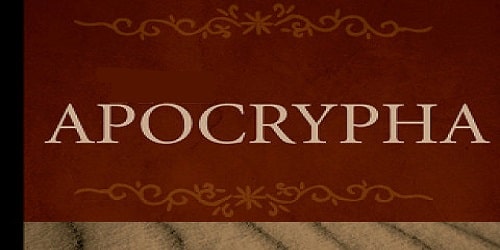Apocrypha Meaning
In search of the origin of the word apocryphal we must go back to the Greek word “apokryphos” with the meaning of hidden. From Greek, it passed into Latin as “apocryphus” to be taken into our language.
Its use is very common in the religious field, to designate sacred texts not made known (hidden) as they are not included in the Bible, which are supposedly kept secret because they contradict some substantial ideas of Christianity or tell fantastic or magical facts, or They are not very clear in their writing.
The canonical gospels, on the contrary, belong to some of the apostles whose version is considered true as eyewitnesses of what they saw and heard, and who are those of John, Luke, Matthew and Mark; The Apocrypha were not recognized by ecclesiastical authorities as part of the biblical canon.
In 1945, a text known as the “Gospel of Thomas” was found in Nag Hammadi (Egypt), which we can mention as an example of an apocryphal Gospel. We see in this case that the Gospel is attributed to an apostle. Other cases of apocryphal gospels are designated by virtue of their content, as is the case with the “Gospel of Truth,” a Gnostic gospel that consists of fifty-three sentences.
As for Protestantism, it considered several books apocryphal, which are included in the Catholic Bible, annealed at a later date (deutero-canonical), and accepted by the Council of Trent.
In another sense, an apocryphal work: literary, scientific text, painting or legal writings such as a will; It is one that appears to belong to someone’s authorship, but this is not true. The apocryphal contains falsehood, regarding its authorship or time of its creation.
Apocrypha Meaning in Hindi
अपोक्रिफ़ल शब्द की उत्पत्ति की खोज में हमें ग्रीक शब्द “अपोक्रिफ़ोस” पर वापस जाना होगा जिसका अर्थ छिपा हुआ है। ग्रीक से यह लैटिन में “अपोक्रिफ़स” के रूप में आया और हमारी भाषा में शामिल हो गया।
धार्मिक क्षेत्र में इसका उपयोग बहुत आम है, पवित्र ग्रंथों को नामित करने के लिए जिन्हें ज्ञात नहीं किया गया (छिपा हुआ) क्योंकि वे बाइबल में शामिल नहीं हैं, जिन्हें कथित तौर पर गुप्त रखा जाता है क्योंकि वे ईसाई धर्म के कुछ महत्वपूर्ण विचारों का खंडन करते हैं या शानदार या जादुई तथ्य बताते हैं, या वे अपने लेखन में बहुत स्पष्ट नहीं हैं।
इसके विपरीत, विहित सुसमाचार कुछ प्रेरितों के हैं जिनके संस्करण को उनके द्वारा देखी और सुनी गई बातों के प्रत्यक्षदर्शी के रूप में सत्य माना जाता है, और जो जॉन, ल्यूक, मैथ्यू और मार्क के हैं; अपोक्रिफा को चर्च के अधिकारियों द्वारा बाइबिल के कैनन के हिस्से के रूप में मान्यता नहीं दी गई थी।
1945 में, नाग हम्मादी (मिस्र) में “थॉमस का सुसमाचार” नामक एक पाठ पाया गया, जिसे हम एक अपोक्रिफ़ल सुसमाचार के उदाहरण के रूप में उल्लेख कर सकते हैं। हम इस मामले में देखते हैं कि सुसमाचार को एक प्रेरित के लिए जिम्मेदार ठहराया गया है। अपोक्रिफ़ल सुसमाचार के अन्य मामलों को उनकी सामग्री के आधार पर नामित किया जाता है, जैसा कि “सत्य का सुसमाचार” के मामले में है, एक ज्ञानवादी सुसमाचार जिसमें पचास-तीन वाक्य होते हैं। #
प्रोटेस्टेंटवाद के लिए, इसने कई पुस्तकों को अपोक्रिफ़ल माना, जिन्हें कैथोलिक बाइबिल में शामिल किया गया है, बाद की तारीख (ड्यूटेरो-कैनोनिकल) में एनील किया गया और ट्रेंट की परिषद द्वारा स्वीकार किया गया।
दूसरे अर्थ में, एक अपोक्रिफ़ल कार्य: साहित्यिक, वैज्ञानिक पाठ, पेंटिंग या कानूनी लेखन जैसे कि वसीयत; यह वह है जो किसी के लेखकत्व से संबंधित प्रतीत होता है, लेकिन यह सच नहीं है। अपोक्रिफ़ल में इसके लेखकत्व या इसके निर्माण के समय के बारे में झूठ होता है।

